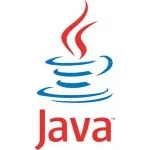MapStruct vs ModelMapper: A Comparative Analysis
In Java development, frequent data transformations between different object models are commonplace. This often involves tedious manual coding to map properties between objects, increasing the risk of errors. To address this, libraries like MapStruct and ModelMapper offer automated solutions.
This article provides a comprehensive comparison of these two popular libraries, highlighting their key features, strengths, and weaknesses to help you make an informed decision for your projects.
1. MapStruct: The Power of Compile-Time Code Generation
MapStruct leverages annotations to define mappings between source and target objects. For instance:
@Mapper
public interface UserMapper {
User toUser(UserDto userDto);
UserDto toUserDto(User user);
}
Based on these annotations, MapStruct generates a highly optimized mapper implementation at compile time. This generated code often outperforms hand-written or reflection-based mapping solutions.
Core Mechanism
Developers define mappings using annotations. During the compilation process, MapStruct generates highly optimized Java code that directly maps properties between source and target objects. This eliminates the performance overhead associated with runtime reflection, which is a key feature of ModelMapper.
Key Advantages
- Exceptional Performance: By generating dedicated mapping code at compile time, MapStruct significantly outperforms reflection-based approaches, making it ideal for performance-critical applications.
- Enhanced Type Safety: MapStruct enforces type safety by performing rigorous checks during compilation. This proactive approach minimizes the risk of runtime errors and improves code stability.
- Improved Readability and Maintainability: The use of annotations to define mappings enhances code clarity and makes the mapping logic more explicit, leading to better code maintainability.
- Extensive Customization Options:
- Expression Language: Offers a powerful expression language for defining complex mapping logic beyond simple property assignments.
- Method Overloading: Supports method overloading for flexible mapping scenarios, allowing you to define multiple mapping methods with different parameters.
- Built-in Type Converters: Provides a comprehensive set of built-in type converters for common data type transformations (e.g., String to Date, Integer to Long).
Benefits of MapStruct
MapStruct offers several key advantages that streamline the Java development process when dealing with object mappings:
| Benefit | Description |
|---|---|
| Reduced Boilerplate | Significantly reduces the amount of manual code developers need to write for data mappings, saving time and effort. |
| Improved Readability | Employs annotations to express mapping logic in a concise and declarative manner, enhancing code clarity and maintainability. |
| Enhanced Performance | Utilizes compile-time code generation, resulting in highly optimized mapping implementations that outperform reflection-based approaches. |
| Type Safety | Ensures type safety by performing rigorous compile-time checks, catching potential mapping errors early in the development process and improving code stability. |
2. ModelMapper: Flexibility and Convenience
ModelMapper takes a different approach, relying on reflection to dynamically map properties between objects.
- Core Mechanism: It automatically maps fields with matching names and data types, providing a convenient and often straightforward solution for basic mapping requirements.
- Key Advantages:
- Ease of Use: Minimal configuration is typically required for basic mappings, making it a user-friendly option.
- High Flexibility: Offers a wide range of configuration options:
- Custom Mappers: Allows you to define custom mapping logic for specific properties or scenarios.
- Type Converters: Supports custom type converters for handling non-standard data type conversions.
- Fine-grained Configuration: Enables fine-grained control over the mapping process, such as ignoring specific fields or applying custom mapping strategies.
3. Choosing the Right Tool: A Comparative Table
| Feature | MapStruct | ModelMapper |
|---|---|---|
| Mapping Mechanism | Compile-time code generation | Reflection |
| Performance | High | Can be slower due to reflection overhead |
| Type Safety | Strong compile-time checks | Limited compile-time checks |
| Ease of Use | Requires more initial setup | Generally easier to use for basic mappings |
| Customization | Highly customizable (expression language, method overloading) | Flexible configuration options |
| Best Suited For | Performance-critical applications, complex mappings, projects where type safety is paramount | Simple mappings, projects where flexibility and ease of use are prioritized |
4. Conclusion
Both MapStruct and ModelMapper are valuable tools for Java developers, each with its own strengths and weaknesses. The optimal choice depends on the specific requirements of your project:
Prefer Simplicity: If you require a simple and straightforward solution for basic mappings, ModelMapper might be a suitable choice..
Prioritize Performance: If performance is critical, MapStruct’s compile-time code generation provides a significant advantage.
Value Type Safety: MapStruct’s rigorous type safety checks can help prevent runtime errors and improve code stability.
Need for Complex Mappings: MapStruct’s powerful expression language and customization options make it well-suited for complex mapping scenarios.


